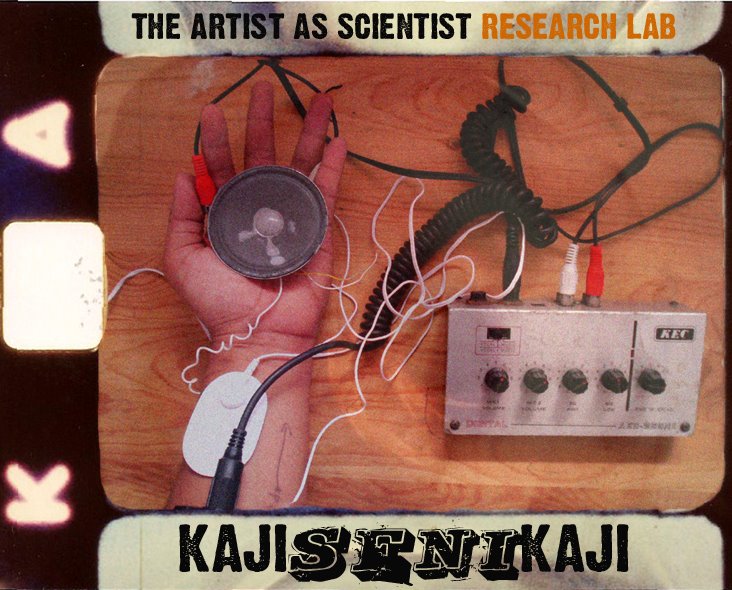by Jim Cummings
As presented at Sound, Environment, and Connective Technologies
University of California Riverside
May 12, 2006
Note: Sound samples will take several minutes to load on a dialup connection; you can track progress on play bar on each player. Remember to stop/pause a sample that is playing before triggering another to start.
The relationship and synergy of art and science has typically been viewed through one of three general frames. The first, and probably most acceptable or interesting to scientists, is the idea that art has an interpretive function—building on the fact that artists are, at times, more capable of expressing the beauty or the complexity of science’s findings. There is a sense that the artist can reach the public at large, that imagery or film or sound can be shaped in ways that express the essence of what science is discovering in ways people can better grasp. The second is found in artists who are simply inspired by science, using it as a jumping off point for artworks that are idiosyncratic or compelling on purely artistic merit, while incorporating elements that involve nature or some sort of scientific imagery, but that are not centrally trying to share any concrete scientific findings or data. And finally, quite often, exercises in “art and science” engage the relationship on an abstract or philosophical level in which the artistic expression may not even bear any outward indication that science is involved—it’s more of a conceptual foundation or underlying trigger for the artist’s vision.
At the Acoustic Ecology Institute, we are beginning to explore a somewhat different approach to the synergy of art and science. We are interested in ways that artistic insights can frame questions about what science might look at and listen for. We are looking for art that both presents empirical scientific data in a way that can engage the public, and frames questions or hypotheses that are worthy of scientific investigation.
This particular angle of exploration is quite natural for us, in that the little community of acoustic ecology folk in northern New Mexico includes two people, both of whom serve on our Board of Directors, who have centered their own artistic lives on this theme. David Dunn has been an especially curious listener, recordist, and engineer. His most recent project delves deep into the bioacoustics of a species of bark beetle that is devouring our indigenous piñon pine forests; his recordings clearly suggest a diversity of sounds that are worthy of further research by entomologists. Steve Feld, by contrast, works in the social sciences. He’s an award-winning anthropologist and musicologist who has spent a quarter century championing a consideration of an anthropology of sound (not just music), and creating soundscape compositions as a way of sharing his field research findings and queries. Today’s talk will center on their work, but over the coming year, we fully expect to be able to highlight similar work by other artist/scientists.
Dunn says, in the liner notes to his bark beetle CD, The Sound of Light in Trees, "My foremost interest these days concerns ways that formal concepts and techniques of music and sound art can contribute to scientific research. Not only can sound artists reveal new phenomena within the natural world; their creative strategies for creating a compelling sonic experience out of the sounds of the natural world can have a deeper application within science itself." Part of his inspiration derives from his long-held conviction that there is a deep and profound intelligence innate to all of life, that, as he says, “what science now reveals to us about the communicative intent of other living things will appear comically shallow to us in a hundred years.” In this time of mounting ecological crisis, he is turning more and more, in his art and in his own personal inquiry, toward listening to what the life around us is saying. He spends long hours listening to bats through his unique omnidirctional ultrasonic mic, and to beetles in trees using probe and contact mics. He notes the addictive quality of having his aural sense expanded through technology: “It is truly amazing to sit for hours in the natural world with your ears technologically sensitized to be more on a par with the other forms of life around you… This means of focusing technology towards a kind of expansion of consciousness gives us access to listening beyond the boundaries of our usual human perception. It applies current technological breakthroughs in music and sound art towards a non-human centered and environmentally relevant art practice.”
David believes that the art world desperately needs to ground its imagination in a deeper understanding of the natural world, and that science is likewise yearning to reach beyond the limits imposed by science’s inherent need to be deeply rigorous, a rigor which by its very nature necessitates a kind of narrowness that can stifle or distrust our imaginative natures. As Gregory Bateson said: “Rigor alone is paralytic death, but imagination alone is insanity.”
So, what has David been discovering? And how has he framed this, how is he presenting this work, to the public and to the scientific community?
READ MORE
Subscribe to:
Post Comments (Atom)



No comments:
Post a Comment